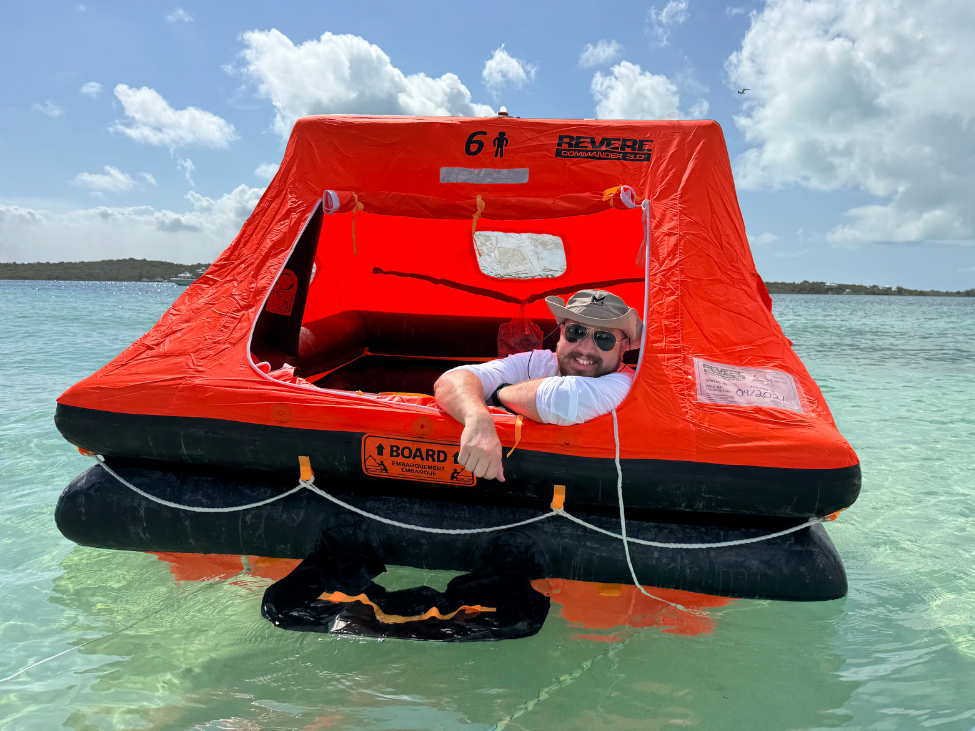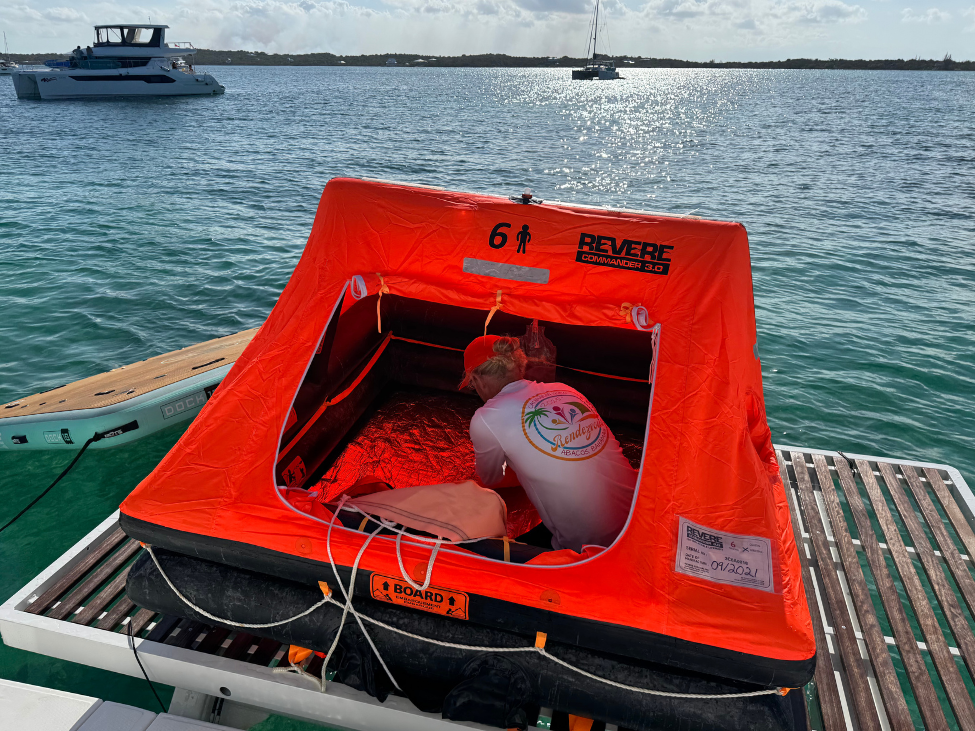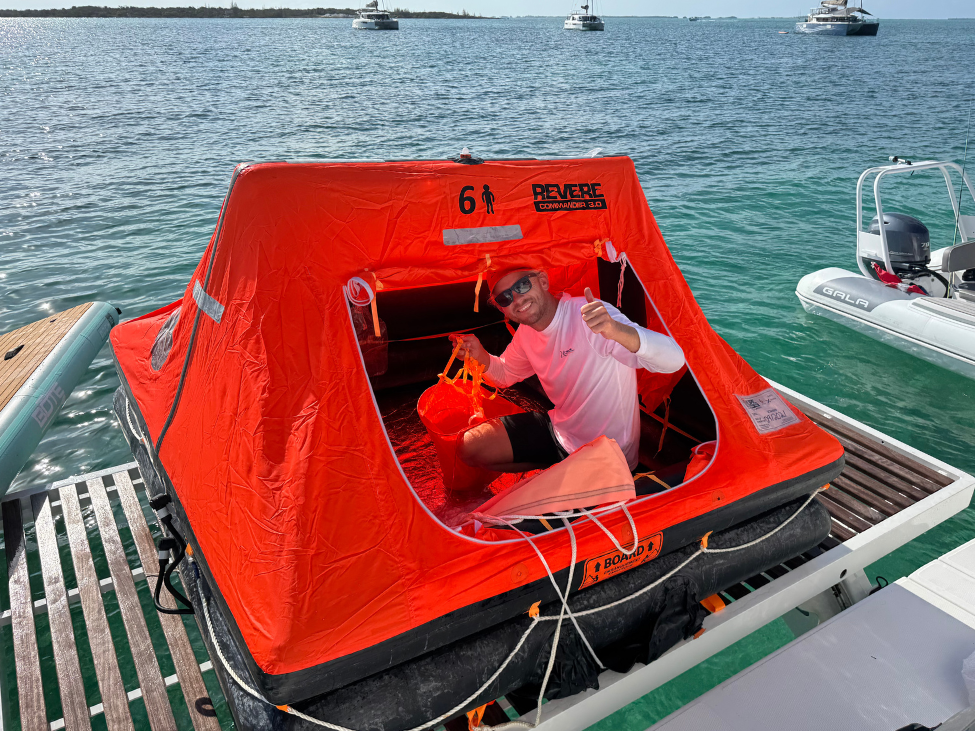Sailing a catamaran is pure magic—comfort, speed, stability, and endless horizons. But let’s be real: the ocean plays by its own rules. Even the best-maintained yacht can run into trouble—whether from bad weather, a surprise collision, or an equipment meltdown.
When things go sideways offshore, preparation is your superpower. That means understanding your liferaft, safety gear, and ditch bag—not just what they are, but how to use them. The goal? Turn a potential scramble for survival into a calm, controlled evacuation.

1. The Liferaft: Your Emergency Home
Think of your liferaft as the ultimate “just in case” insurance policy. It’s not the first place you want to be—but when the time comes, you’ll be glad it’s there.
Choosing the Right Liferaft
- Offshore vs. Coastal: Offshore rafts are built for the big leagues—insulated floors, canopies, and better ballast for rough seas.
- Capacity: Always pick one rated for at least one more person than your crew.
- Mounting on a Catamaran: Common spots are the coachroof, trampolines, or a stern locker—easy to deploy without tangling in rigging or smashing into the hulls.
What’s Inside (and Why It Matters)
Climb inside and you’ll find flares, food, water, a pump, and—yes—a knife. No, it’s not for dramatic “lost at sea” moments—it’s for cutting the painter line if your yacht is sinking. Why? Because that line ties the raft to your boat, and you don’t want the raft going down with it.
Pro tip: Don’t cut that line unless the boat is actually going down. Your best survival odds are often staying with the yacht—it’s bigger, easier to spot, and probably still has more supplies.
You’ll also find a drogue (sea anchor) to keep you from drifting too far from your last known position while waiting for rescue.
For a full breakdown of what should be in your raft, check our Abandon Ship Kit guide.
2. Safety Gear: Your First Line of Defense
Your liferaft is your Plan B. Plan A? Avoiding the need to get in it at all. That’s where your onboard safety gear comes in.
Personal Gear
- Lifejackets with harnesses (automatic inflation, sprayhood, light)
- Personal Locator Beacons (PLBs) within arm’s reach
- Tethers to prevent going overboard
Vessel-Based Gear
- EPIRB (Emergency Position Indicating Radio Beacon) with hydrostatic release
- Waterproof VHF radios (fixed + handheld)
- AIS Man Overboard devices for pinpoint rescue
Fire & Flooding Equipment
- Manual & automatic bilge pumps (redundancy matters)
- Fire extinguishers for all onboard hazards
- Damage control tools (collision mats, wooden plugs, sealants)


3. The Ditch Bag: Your Grab-and-Go Lifeline
The ditch bag is like your raft’s “plus one.” It makes up for what the emergency pack doesn’t have and keeps you alive longer while waiting for rescue.
Survival Essentials
- Water (1–2 liters per person) & desalination tools
- High-calorie, long-lasting food
Signaling & Navigation
- Extra flares, smoke signals
- Signal mirror, whistle, waterproof flashlight
- Handheld GPS
Medical & Comfort
- First aid kit with seasickness meds
- Thermal blankets & spare clothing
- Gloves for rope handling or repairs
Miscellaneous
- Multi-tool & rigging knife
- Compact fishing kit
- Sunscreen & sunglasses
4. Practice Makes Panic-Free
Gear is only half the battle. The other half? Knowing how to use it before you need it.
- Deploy a training liferaft in calm waters.
- Run man overboard drills in real conditions.
- Practice using your EPIRB and VHF (without sending a false distress signal!).
- Climb inside a life raft so you know the space, layout, and feel.
For step-by-step preparation tips, check our Rescue at Sea guide.
The Bottom Line
A well-prepared crew treats safety gear as part of the adventure, not just a “worst case” afterthought. Your liferaft is your emergency home, your safety gear keeps trouble from escalating, and your ditch bag buys you time and comfort until rescue arrives.
When chaos hits, calm comes from confidence—and confidence comes from preparation.





